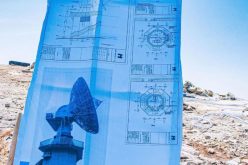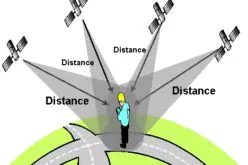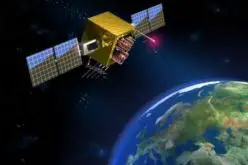In a significant leap forward for atmospheric science, researchers have successfully used data from millions of Android phones to map the ionosphere, an area of Earth’s upper atmosphere crucial to the accuracy of satellite navigation systems. This innovative method, published in Nature, leverages the power of crowdsourced sensor measurements, demonstrating how mobile phones can contribute to scientific research while ensuring privacy. This new approach, known as Mobile-Based Ionosphere Mapping, is paving the way for improved GPS accuracy and a deeper understanding of atmospheric phenomena.
Understanding the Ionosphere’s Impact on GPS
The ionosphere, filled with charged particles created by solar radiation interacting with atmospheric gases, can disrupt satellite communications, particularly GPS signals. These disruptions vary based on factors such as geographical location, time of day, and season.
Major solar events can cause significant interference, impacting GPS accuracy. This is where Mobile-Based Ionosphere Mapping becomes crucial. By collecting data from millions of mobile devices, researchers can correct errors due to ionospheric disruptions, helping refine GPS signals.

a–c, The 9,036 monitoring stations (orange dots) contribute to the Madrigal database, which consolidates dozens of global and regional station networks. The blue dots show approximately 100,000 locations where phone measurements are available. A location within a big city may have thousands of phones. The global map (a) shows that some parts of the world (such as the USA and Europe) are densely covered by monitoring stations. Zooming in on Europe (b) shows that phones have even denser coverage. In India (c), the relative coverage of phones is greater still. Station locations were taken from the Madrigal database. Locations with phones are from the present study.
The Role of the Solar Cycle
The importance of Mobile-Based Ionosphere Mapping is particularly heightened in the context of the solar cycle, which peaks roughly every 11 years and will reach its next maximum in 2025.
During this peak, solar activity, including solar flares and coronal mass ejections, intensifies, leading to increased disturbances in the ionosphere. These disturbances can significantly affect GPS accuracy, satellite communications, and other critical systems.
With the upcoming peak, Mobile-Based Ionosphere Mapping offers a timely and crucial tool to monitor the ionosphere’s dynamic changes, allowing for real-time adjustments to satellite navigation systems and better preparedness for potential disruptions.
Also Read – Ginan an Open-Source Real-Time Positioning Correction Service
Crowdsourcing Data: A Novel Approach
Traditional methods for monitoring the ionosphere rely on stationary monitoring stations, which have limited coverage. Mobile-based ionosphere Mapping offers a groundbreaking alternative by using millions of mobile phones equipped with GPS receivers. These phones collect data that can be aggregated to create a detailed and accurate map of the ionosphere, even in regions lacking monitoring infrastructure.
Although individual phone readings can be noisy, the volume of data from millions of phones compensates for these limitations. The study used Mobile-Based Ionosphere Mapping to create a global map by averaging signals and correcting biases with sophisticated algorithms, offering a higher resolution than traditional methods in under-covered regions.

Ionospheric TEC measurements along the path from a satellite to the ground by 1,011 phones and by a GNSS monitoring station (TLSE00FRA) in Toulouse, France (UTC + 1) on 5 November 2023. a, Comparison of measurements from a GNSS monitoring station with nearby phones over the same time period. Each blue point is a single TEC measurement to this satellite from a phone within 10 km of the monitoring station. Measurements from a single phone are shown in green to show the level of noise. The solid blue line shows the median of measurements from all phones in the area using a 10-minute sliding window. (The median is robust to infrequent outlier measurements beyond the axis limits.) The orange line shows the ionospheric TEC measured by monitoring station TLSE00FRA. b, Elevation angle to the satellite as it rises, passes the receiver antenna overhead and then sets. c, Map of the receiver location (Toulouse, France), the ground track of the satellite (GPS PRN 30 in purple) and the ionospheric piercing-point track of the GPS signal (red). The station measurements in a and the station location and satellite track in b and c are from International GNSS Service and were obtained via NASA Crustal Dynamics Data Information System. All phone data are from the present study.
Enhancing GPS Accuracy and Scientific Understanding
One of the most significant benefits of Mobile-Based Ionosphere Mapping is the improvement in GPS accuracy. Understanding the ionosphere’s current state allows GPS receivers to adjust for errors, reducing location discrepancies by several meters.
This is critical for applications such as emergency response. Additionally, the data provides unprecedented scientific insights, offering valuable information about space weather, which can affect essential systems like power grids and communications.

a, Ionospheric VTEC from phones during a geomagnetic storm (Kp index reaching 9) at 23:30 on 10 May 2024 showing the storm-enhanced density over North America. b,c, Plasma bubbles in the equatorial anomaly over South America at 00:20 on 13 May 2024 in ionospheric VTEC from phones (b) and in a far-ultraviolet image (c) of O i emission at 135.6 nm from the ionosphere F region captured by a geostationary satellite at 0.04-nm bandwidth (data from NASA/GOLD). d–j Plasma bubbles over South Asia on 14 October 2023. Longitudinal features are visible in the equatorial anomaly in the ionospheric VTEC from phones at 14:39 (e) but were absent earlier at 12:57 (d). The dotted lines show the trajectory of a COSMIC-2 satellite measuring the local ion density at 520 km altitude (data from the University Corporation for Atmospheric Research (UCAR) COSMIC Program). The ion density varies smoothly in h before the plasma bubbles have formed but shows a depletion in i as it passes through one of the bubbles. South Asia has few publicly available ionospheric monitoring stations so the VTEC measurements from the 18 monitoring stations (data from Madrigal) shown in f fail to capture the detail seen by around 32,000 phones in e over the same time window. To visualize the time evolution of the longitudinal features, a slice of cells was chosen (g) and the VTEC measured by phones for the slice over time is shown in j. As the Sun rises, the ionization increases and the northern equatorial anomaly appears over this region. Near sunset, a series of longitudinal features appear in the equatorial anomaly moving eastwards at about 100 m s−1. Their motion can be seen as stripes from 14:00 onwards. All times are in UTC.
Privacy-Protected Data Collection
Privacy is a major concern in any large-scale data collection. In Mobile-Based Ionosphere Mapping, stringent standards are maintained. Measurements are aggregated, and no individual device is identifiable. Only the general location (within 10 kilometres) is used, ensuring anonymity. This careful approach enhances privacy and data accuracy, making Mobile-Based Ionosphere Mapping a secure and reliable tool for future research.
Global Coverage and Societal Benefits
The new mapping technique extends ionosphere coverage, particularly in areas like South Asia, Africa, and Central America, where traditional monitoring is sparse. These regions, with high mobile phone usage, benefit immensely from Mobile-Based Ionosphere Mapping, enhancing the accuracy of navigation systems globally.
This technology not only improves GPS systems but also aids in predicting geomagnetic events, contributing to the broader field of atmospheric science.
By transforming everyday devices into scientific tools, Mobile-Based Ionosphere Mapping has demonstrated the potential of mobile technology in advancing scientific knowledge.
This innovative approach is a testament to how creative use of technology can lead to groundbreaking discoveries with substantial societal benefits.
As the solar cycle peaks in 2025, this study’s relevance will only grow, offering invaluable insights into ionospheric behaviour during periods of heightened solar activity.
Source: Smith, J., Kast, A., Geraschenko, A. et al. Mapping the ionosphere with millions of phones. Nature 635, 365–369 (2024). https://doi.org/10.1038/s41586-024-08072-x










